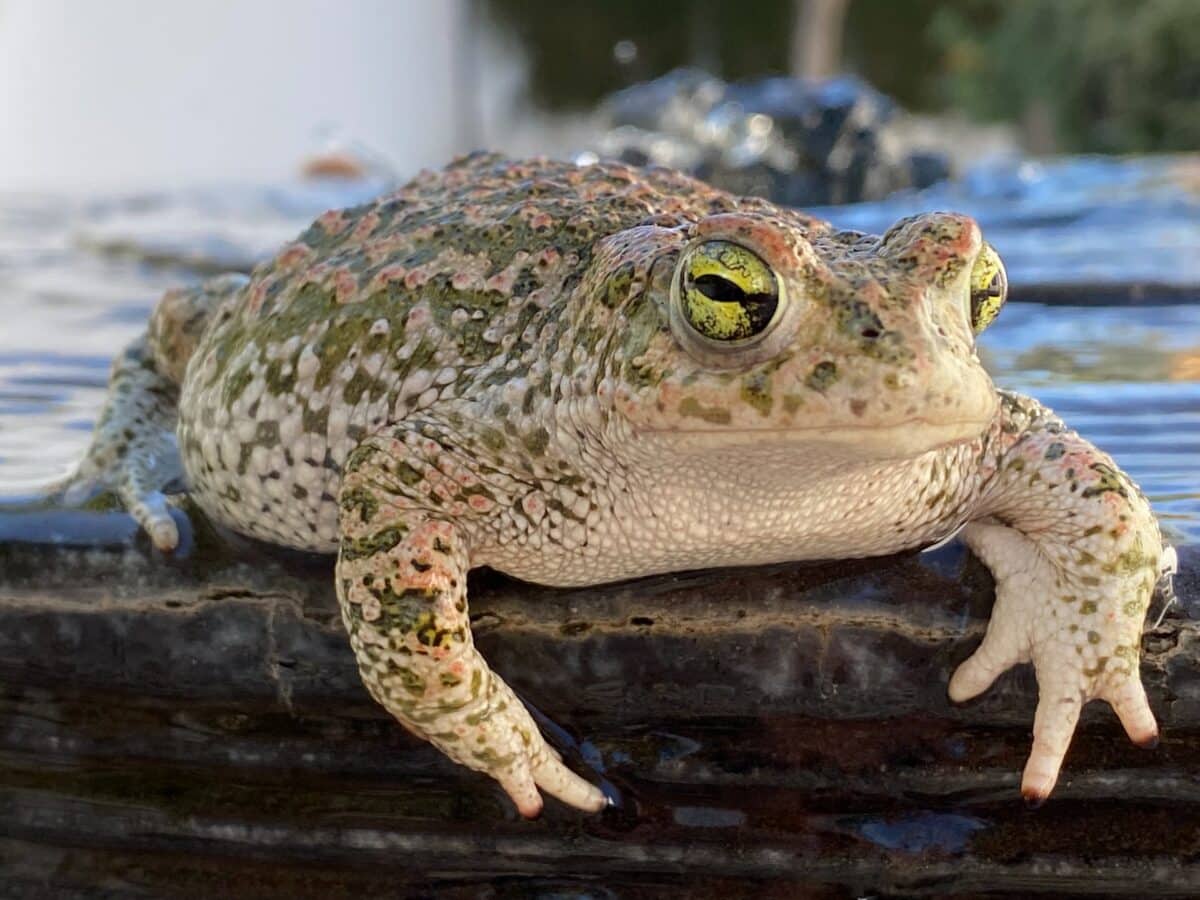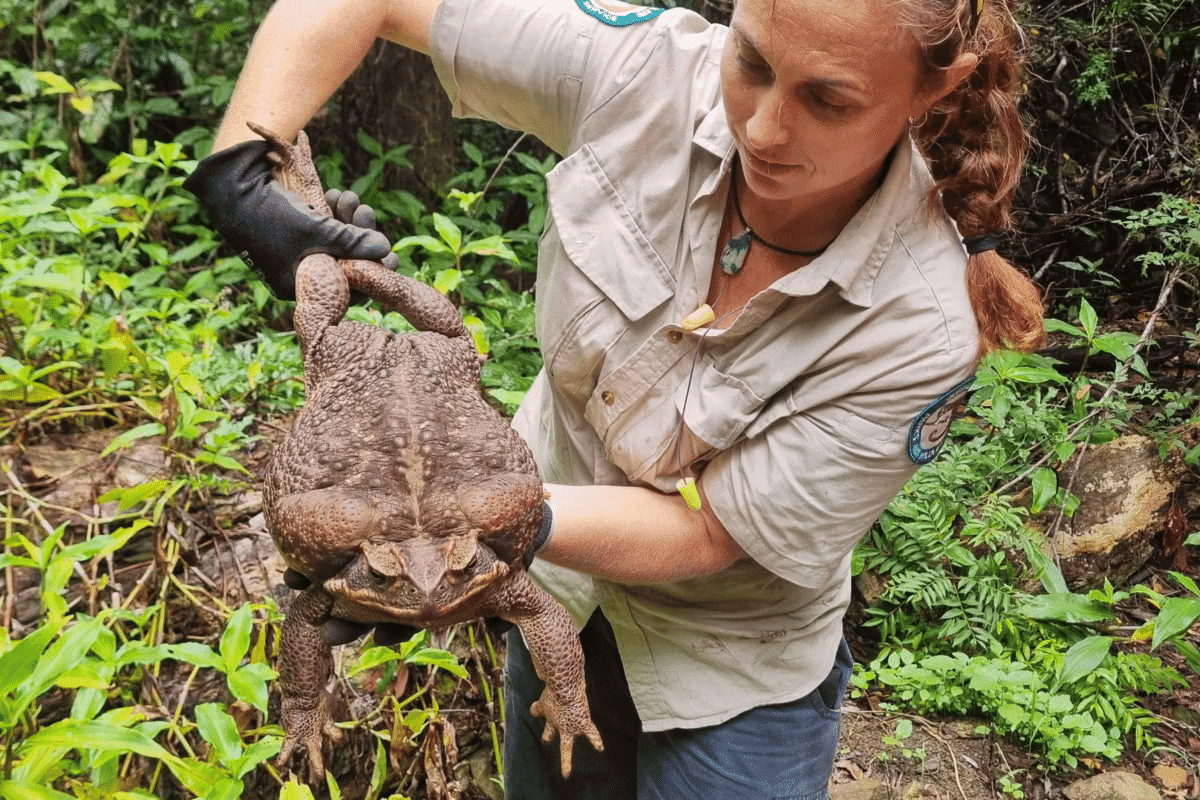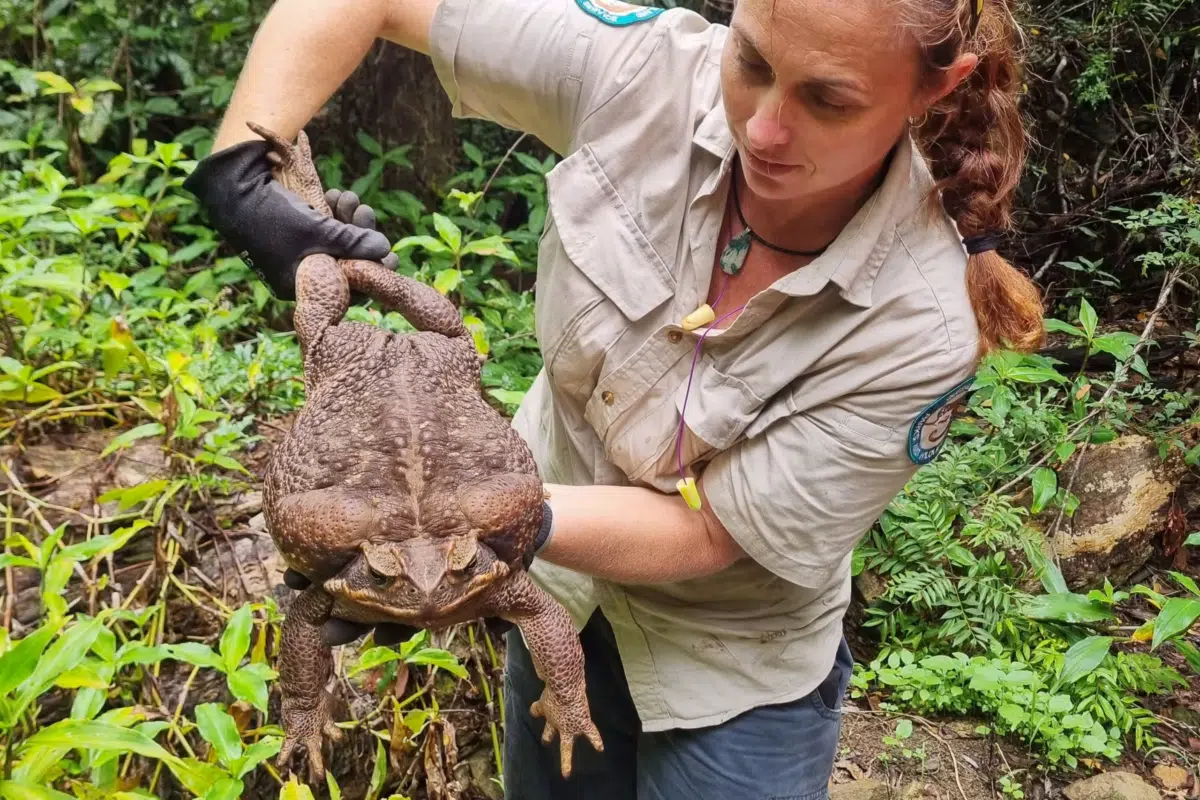In the world of amphibians, there’s a heavyweight champion that has secured its place in history – Toadzilla, the largest toad possibly ever recorded. March 1991 marked the moment when this gargantuan cane toad, weighing a whopping 2.65 kilograms (5.8 pounds) and measuring 38 centimeters (1.3 feet) from snout to vent, entered the spotlight, clinching its well-deserved spot in the Guinness World Records.

The Discovery of Toadzilla
Toadzilla’s discovery reads like a page out of a scientific thriller. Rangers conducting track work stumbled upon this colossal toad in Conway National Park, Queensland. The initial thought of naming it ‘Connie’ after the park quickly gave way to a more fitting moniker – Toadzilla. The name conjures images of a mythical creature, and indeed, this toad posed a colossal threat to its ecosystem.
A Menace in the Making
Toadzilla’s voracious appetite knew no bounds, capable of devouring anything that could fit into its cavernous mouth – insects, reptiles, and even small mammals were on the menu. Cane toads, notorious invaders in Australia, hold the title of one of the most invasive pests in the country. Introduced in 1935 to control the cane beetle, they have since wreaked havoc on local biodiversity.
The Cane Toad Conundrum
Cane toads, often adorned with large warts and reaching sizes of up to 26 centimeters (10.2 inches) and 2.5 kilograms (5.5 pounds), are a menace to ecosystems. Their prolific reproduction, with females capable of laying up to 30,000 eggs in a season, allows them to rapidly colonize habitats. Their toxic nature poses a severe threat to wildlife, contributing to the decline and extinction of several native species.
Toadzilla’s Fate
Recognizing the potential environmental damage Toadzilla could inflict, authorities opted for a decisive course of action. The giant toad was “humanely euthanized” to prevent further harm to the delicate balance of the ecosystem. This highlights the ongoing struggle in Australia, where controlling the cane toad population involves meticulous manual removal due to the lack of effective biological control methods.

The Legacy of Toadzilla
While Toadzilla may no longer roam the wilds of Queensland, its legacy lives on in the scientific realm. The Queensland Museum received the body of Toadzilla for research purposes. Thus, offering valuable insights into the anatomy and ecology of these colossal amphibians. Understanding the intricacies of such invasive species is crucial for developing strategies to mitigate their impact on native ecosystems.
In the saga of Toadzilla, we find a cautionary tale of the unintended consequences. Ones that can arise from introducing non-native species into ecosystems. The giant toad serves as a symbol of the ongoing battle to protect biodiversity and maintain ecological harmony. As we marvel at the record-breaking size of Toadzilla, let it also be a reminder of the delicate balance we must strive to preserve in our natural world.
Thank you for following along with this article –
Next up in the animal kingdom:
Join our Forum for free today!

- Big Cats Love Mouthing Affection - July 22, 2024
- Kind Elephant Merciful To Lion Cubs - July 22, 2024
- Beachgoers Save Massive Shark Stranded In Florida - July 22, 2024

